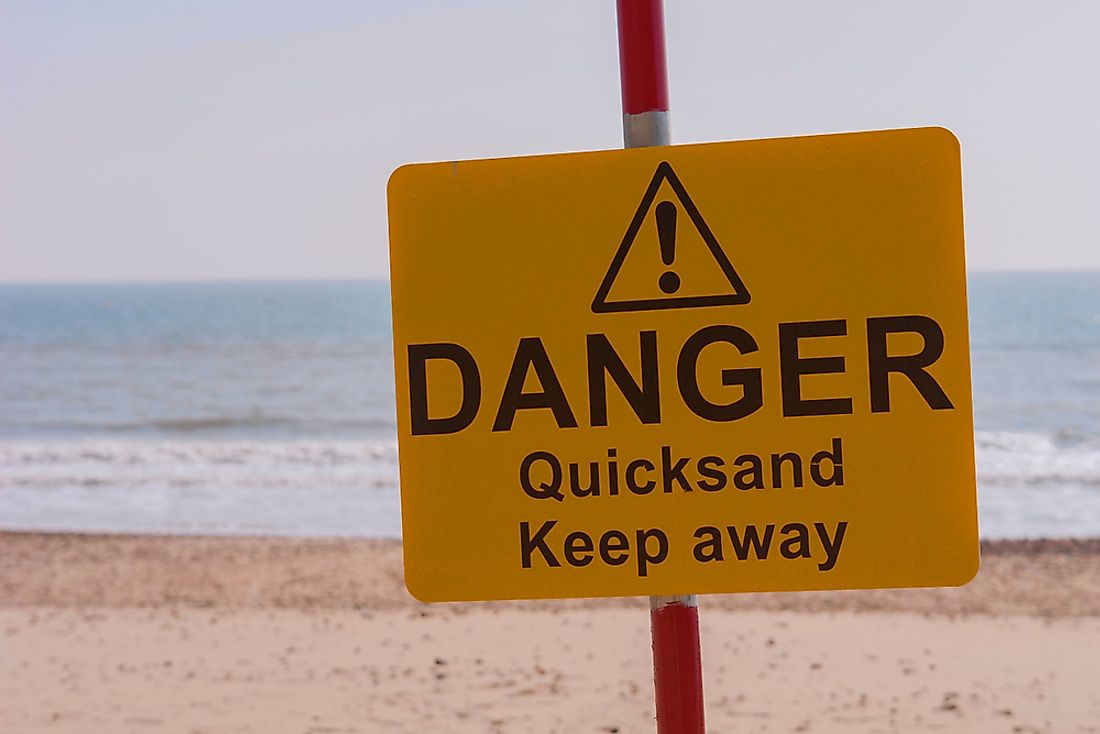Did You Know That More People Drown In Deserts Than Die From Dehydration?

Deserts often invoke a certain kind of picture in our minds' eyes. In our imaginations, we usually picture a desert as a vast, hot, and lifeless sandy expanse, without any sight of the most important life-nurturing compound of nature: water. For most of us, death in a desert means death by dehydration, but little do most know that, in deserts, death by drowning is much more common than death by dehydration.
Dangers of the Desert
Over one-third of the Earth’s landscape is covered by deserts, and only 20% of it is covered by sand. The remaining 80% of deserts might be made up of rocks and pebbles, desert soil, oases, and even ice and snow (such as in Antarctica). All deserts have one feature in common, however, and that is that very low precipitation and relatively infinitesimal amounts of surface water are seen. As a result, deserts claim quite a few lives each year by dehydration. Many hikers who lose their way, travelers with car breakdowns in the midst of a desert road, and those who are not properly prepared for a desert trip often lose their lives to dehydration in the desert. Heat cramps and heat strokes also claim many lives. Deserts are also full of venomous creatures in the form of snakes like rattlesnakes, Horned Desert vipers, Inland taipans, and sidewinders. Deserts are also home to lizards like Gila monster and Mexican bearded lizards, venomous scorpions, deadly spiders, and other potentially harmful animals. Bites from some of these animals can kill an adult human being in a matter of a few seconds. All of the above causes claim only a few lives, however, usually doing so in singular incidents. However, there is a much more lethal danger awaiting in the desert than all the above mentioned causes, and those are the dangers posed by quicksands, sand storms, and flash floods.
Quicksands
Quicksands occur in areas where the desert sand is saturated with water, thereby creating a semi-liquid state of water which often pulls people down into its lethal depths. It is, however, possible to escape from quicksands by staying calm instead of panicking, and following certain special tactics that will aid an escape from these death traps. Forcing oneself out when trapped in quicksand only creates further trouble, consequently pulling a person down further into its clutches.
Sand Storms
Sand storms in deserts can be horrendous, and these are responsible for killing large numbers of people and damaging huge areas of property. Sand storms involve a turbulent, suffocating, cloud of particulate matter blowing at high speeds over vast areas of land in the desert. Such storms reduce visibility to almost nil, injure victims, and also bury many souls underneath high piles of sand. Many people become lost in the face of such storms or receive serious bruises from the flying sand and pebbles, and some even die by drowning in sand. It is believed that, in 525 B.C., 50,000 soldiers of a Persian Army perished in the Thar Desert in the face of a giant sandstorm, and their compelling remains were discovered by archaeologists only a few years ago in the Middle Eastern deserts.
Flash Floods
Flash floods in deserts, caused by torrential rains high up on the mountains, are also a cause of numerous deaths by drowning. Without any sign, gushes of water flow down the dry river beds, engulfing all that comes in their paths. For example, in 2006, nearly 130 people perished in the Rajasthan, India region in flash floods induced by torrential rains in the Thar Desert. As recently as September of 2015, 18 people died in desert flash floods near the Utah-Arizona border in the United States.











